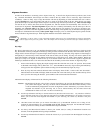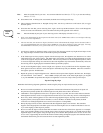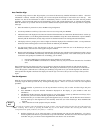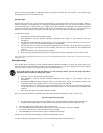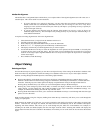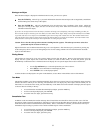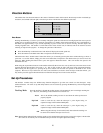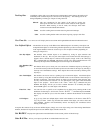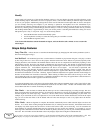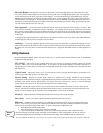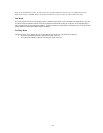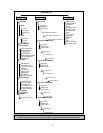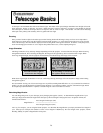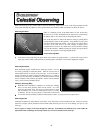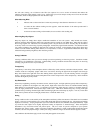
22
Identify
Identify Mode will search any of the NexStar database catalogs or lists and display the name and offset distances to the
nearest matching objects. This feature can serve two purposes. First, it can be used to identify an unknown object in the field
of view of your eyepiece. Additionally, Identify Mode can be used to find other celestial objects that are close to the objects
you are currently observing. For example, if your telescope is pointed at the brightest star in the constellation Lyra,
choosing Identify and then searching the Named Star catalog will no doubt return the star Vega as the star you are observing.
However, by selecting Identify and searching by the Named Object or Messier catalogs, the hand control will let you know
that the Ring Nebula (M57) is approximately 6° from your current position. Searching the Double Star catalog will reveal
that Epsilon Lyrae is only 1° away from Vega. To use the Identify feature:
• Press the Menu button and select the Identify option.
• Use the Up/Down scroll keys to select the catalog that you would like to search.
• Press ENTER to begin the search.
Note: Some of the databases contain thousands of objects, and can therefore take a minute or two to return the
closest object.
S
S
c
c
o
o
p
p
e
e
S
S
e
e
t
t
u
u
p
p
F
F
e
e
a
a
t
t
u
u
r
r
e
e
s
s
Setup Time-Site - Allows the user to customize the NexStar display by changing time and location parameters (such as
time zone and daylight savings).
Anti-backlash
– All mechanical gears have a certain amount of backlash or play between the gears. This play is evident
by how long it takes for a star to move in the eyepiece when the hand control arrow buttons are pressed (especially when
changing directions). The NexStar's anti-backlash features allows the user to compensate for backlash by inputting a value
which quickly rewinds the motors just enough to eliminate the play between gears. The amount of compensation needed
depends on the slewing rate selected; the slower the slewing rate the longer it will take for the star to appear to move in the
eyepiece. Therefore, the anti-backlash compensation will have to be set higher. You will need to experiment with
different values; a value between 20 and 50 is usually best for most visual observing, whereas a higher value may be
necessary for photographic guiding. Positive backlash compensation is applied when the mount changes its direction of
movement from backwards to forwards. Similarly, negative backlash compensation is applied when the mount changes its
direction of movement from forwards to backwards. When tracking is enabled, the mount will be moving in one or both
axes in either the positive or negative direction, so backlash compensation will always be applied when a direction button is
released and the direction moved is opposite to the direction of travel.
To set the anti-backlash value, scroll down to the anti-backlash option and press ENTER. Enter a value from 0-100 for both
azimuth and altitude directions and press ENTER after each one to save these values. NexStar will remember these values
and use them each time it is turned on until they are changed.
Slew Limits – Sets the limits in altitude that the telescope can slew without displaying a warning message. The slew
limits prevent the telescope tube from slewing to an object below the horizon or slewing to an object that is high enough that
the tube might hit one of the tripod legs. However, the slew limits can be customized depending on your needs. For
example, if you would like to slew to an object that is close to the zenith and are certain that the tube will not hit the tripod
legs, you can set the slew limits to 90º in altitude. This will allow the telescope to slew to any object above the horizon
without warning.
Filter Limits – When an alignment is complete, the NexStar automatically knows which celestial objects are above the
horizon. As a result, when scrolling through the database lists (or selecting the Tour function), the NexStar hand control
will display only those objects that are known to be above the horizon when you are observing. You can customize the
object database by selecting altitude limits that are appropriate for your location and situation. For example, if you are
observing from a mountainous location where the horizon is partially obscured, you can set your minimum altitude limit to
read +20º. This will make sure that the hand control only displays objects that are higher in altitude than 20º.
If you want to explore the entire object database, set the maximum altitude limit to 90º and the minimum limit to –90º. This
will display every object in the database lists regardless of whether it is visible in the sky from your location or not.
Observing
Tip!



